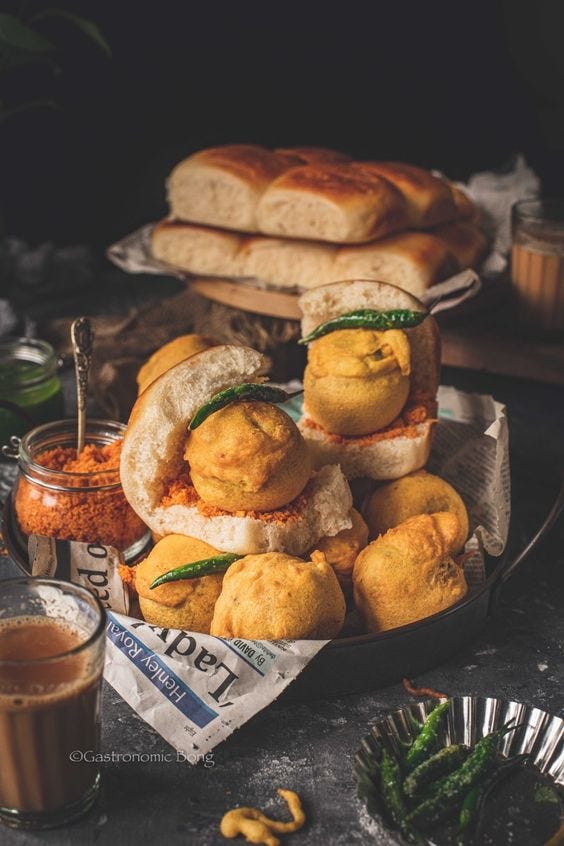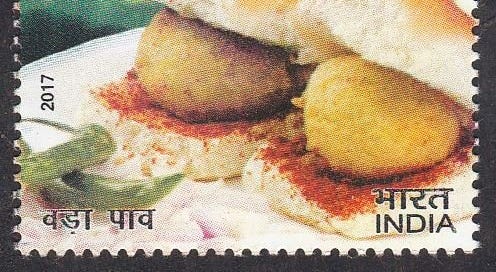Ode to the Bombay batata vada
Core memories featuring a favourite comfort food and the softest promise kept, can make you thankful for trade colonialism on rare occasion. Almost.
I grew up in Thane that was once called the city of lakes. Sixty one lakes, to be precise, according to my grandfather, who seemed to love the city more than anyone I remember.
Thane was never the cool kid compared to Mumbai. Alongside its big, buzzy cousin with hip cafes, restaurants and a seaside promenade with a string of streetlights they called the Queen’s Necklace, Thane was the veritable country bumpkin.
But Thane of the 1990s was also a Marathi theatre-loving city, which took it a notch higher than Mumbai in my book (I knew little then of the auditoriums Mumbai boasted of). To my young, impressionable mind, Thane was the lone city with the best auditorium (Gadkari Rangayatan) to stage great theatre.
That impression may have something to do with the fact that:
Gadkari Rangayatan, built along the shores of Lake Masunda, was something of an architectural marvel in Thane of the 1980s and 90s, and made for a beautiful sight by night when the city lights shimmered on the lake.
My parents loved the theatre and would often take me along to to Gadkari to watch PG-rated plays during the year, and children’s plays in the holidays.
The auditorium’s canteen had the best batata vadas (arguably) sold fresh at intermission in crinkly white paperbags.
And so I grew to love theatre, thanks in great part to batata vadas.
The batata vada is Bombay’s love letter to its residents. Bombay, on the other hand, is the batata vada its residents have a constant craving for - garma garam (hot as), piquant and bursting with flavour.

Floury potatoes are mashed and seasoned with garlic, green chillies, turmeric, mustard seeds, asafoetida, and cumin. The spiced mash is rolled into balls that are dipped into a sunny chickpea flour batter and fried until they flaunt a golden tan. The vadas are served piping hot with a fiery chutney of garlic, red chillies and dried coconut.
Batata vadas almost make me thank trade colonialism, for without it, we wouldn’t be savouring this flavour bomb of an invention. None of the vada’s key ingredients - potatoes, chillies or garlic - are indigenous to India but you could be forgiven for thinking they are.
The Portuguese batatas (potatoes) found such firm footing in the Marathi language and Mumbai kitchens alike that you are never more than a couple of hundred metres from a batata vada in the city to this day.
The snack’s streetside version is even more popular, with the vada served inside a pav or bread roll (from the Portuguese pão for bread) that’s slathered with two kinds of chutneys. Ultimate convenience meal. Perfect fuel for a city on the run. No wonder it sustains a million hungry stomachs daily.

Some folks call it the Bombay burger, but that doesn’t do the vada justice, really.
The batata vadas of my childhood would be bought from favoured vendors in the neighbourhood. Families had firm favourites for a myriad reasons. If you were buying a large order of vadas for everyone at home, the shopkeeper would fry them to order, wrap them in clean banyan leaves, toss in heaps of garlic and chilli chutney and tie them into neat parcels with thin cotton string. That was until the big polythene bag boom changed Indian food parcels forever.
The first vada pav I bought with my own pocket money was from Devika Snacks outside school. This came highly recommended by an older cousin who was a couple of years my senior in school and seemed to know better. During recess and after school, children would descend on that shop like ants. The vada-pav cost a princely Rs 2.50 in 1993. Unlike other vada-pavs, this one came slathered with a sweet and tangy tamarind and date chutney that perfectly cut through the fiery heat of the vada.
However, the best batata vada, hands down, is the one made for me by a grandmother.
I was 10 and craving a vada on my sickbed as I recovered from a nasty bout of malaria. Battling a high fever for well over a week had made me weak, and as I regained my strength and my tastebuds recovered, I started to crave something more exciting than bland rice gruel. What could be better than a batata vada?
Our dear neighbour (also my grandmother’s closest friend for over 60 years) was a retired nurse who visited me nearly every day through that ordeal. Ajji as I called her (grandmother in Marathi) was a strong, no-nonsense woman with a steely resolve. I lay there on my bed, telling her how much I wanted to eat a vada but the earnest farmaish (request) had been falling on deaf ears for obvious reasons.
“वडाच पाहिजे ना? तू आधी बरी हो, मग परातभरून करते तुझ्यासाठी” - “That’s all? You get better first, and I will make you a whole platter of vadas!” she said.
Sure enough, a platter of piping hot Aaji-made, batata vadas arrived home as soon as I had made a full recovery.
Those vadas remain the most potent reminder of the softest promise kept.




Awwe Sai bai! What a deliciously delightful post with the sweetest ending! I can almost taste that vada! Your description of the school kids descending on the vada stall like ants is so perfect! Made me chuckle. Cheers to your return to substack, I have missed you here! 😘🤗
Mouth watering stuff! Bombay rains, vada pav aani chai :')